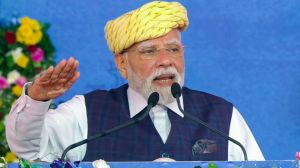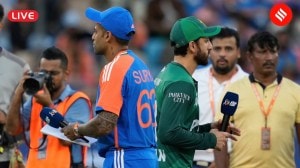Srinath’s the banyan tree protecting the saplings
Despite the spotlight being focused on Sachin Tendulkar, there is an unmistakable force emerging like a tidal wave in Indian cricket. It...

Despite the spotlight being focused on Sachin Tendulkar, there is an unmistakable force emerging like a tidal wave in Indian cricket. It’s the Indian pace attack, which on Monday demolished the much-vaunted Sri Lankan batting line-up.
The match turned not on Tendulkar’s fine 97; it turned on those explosive opening 22 balls of the Sri Lankan innings which saw four wickets falling for 15 runs. That 23-over innings reinforced the belief that in Indian cricket, pace bowling is here to stay.
Indian cricket has, through the years, often asked itself whether pace was the real solution to its bowling problems on the skidding, spin-unfriendly pitches abroad. And invariably the medicine was worse than the ailment: play two spinners, forget about pace.
Now, though, the priorities are clear: pace is the solution. And it is the right solution, because the spinners can then play a support role in those alien conditions.
It’s a ploy that has obviously found greater success in its practitioners, Srinath, Zaheer and Nehra. It is said that fast bowlers hunt in pairs; I believe, rather, that they hunt in packs like the meanest predators
And in these three India has one of the meanest packs in cricket, able to maintain sustained, relentless pressure. India never had enything like this before: I would say this is our most potent bowling attack in the past 10-12 years.
Let’s first turn the spotlight on that battle-scarred warhorse Srinath, under whom much of the young talent has emerged. He’s like the banyan tree sheltering them from the rigors of international cricket.
Like the best wine, Srinath has matured with age. It is skill, not strength, that governs the ship of Srinath. He relies now on his precision, not brute pace, using the crease and the slower ball — new in his armour — to hit the perfect length. And, in so doing, easing the pressure on his wards.
Progress, as in Srinath’s case, has very little to do with speed and everything to do with the direction and areas you put the ball in.
Even when India had one or two good seamers, the problem was always the third, support, bowler who could never sustain the momentum built up by the frontline bowlers.
As a result, the two seamers would end up as beasts of burden, toiling away over after over — as happened with Prasad and Srinath on the last tour of South Africa, with the result that Srinath strained his shoulder.
Now, Zaheer and Nehra share Srinath’s burden — and his ability to pick up wickets by the truckload.
What makes this attack more lethal is the variety it offers. You have Srinath, Mr Consistency, plugging away on line and length. Then you have two left-armers: Nehra is now among the world’s fastest-improving swing bowlers while Zaheer, with the seam bolt upright, gets his movement off the pitch.
And, importantly, they all play attacking, wicket-taking roles, not simply trying to contain the batsmen.
Indian cricket is doing well because these three bowlers are playing together. It’s a perfect recipe that has eluded us on our past few overseas tours: in New Zealand, in England, in the West Indies.
Most success stories are built around a multitude of failures and this one stems from the fitness problems and injuries surrounding the pace trio. Nehra had a groin problem — he took the help of Wasim Akram to deal with that, and also to improve his wrist position.
Yet if one single factor is responsible for these three to perform at their current level, it must be the fitness regime of their trainer and physio. Fitness levels have gone up dramatically in the past couple of years, giving the fast bowlers a yard or two in pace and rhythm.
The strength in your body can only be increased by resistance training, whether in water or pumping iron. You’ve seen the pictures of the Indians running with small parachutes on their backs: this drags in the air, offfers resistance and builds up the body’s muscles. If today Zaheer and Nehra can sustain the kind of speeds they do, a steady 140+ kmph, it is because of this kind of training. Imagine, Nehra was bowling at 125 not so long ago; now he’s crossing 140 and flowing like a river.
But the big question remains: How long will Srinath be there to guide the younger pair? There are enough people waiting in the wings — Salvi, Irfan Pathan, Rakesh Patel — but no one to take on Srinath’s mantle. Take the banyan tree out and you leave the saplings exposed.
That is Indian cricket’s challenge. They’ve worked out everything else; now get Srinath to stay.
Photos



- 01
- 02
- 03
- 04
- 05




























